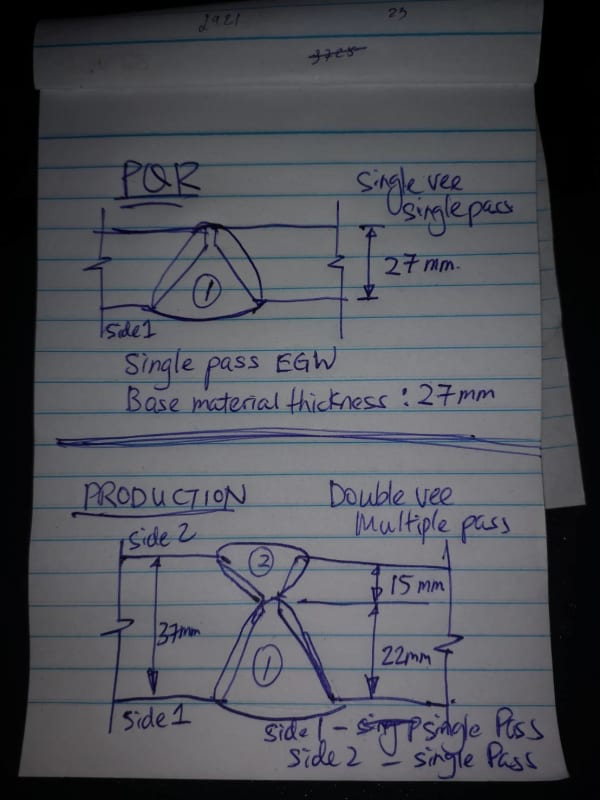Dear experts, I need some help with QW 403.9 requirement.
I have attached a sketch of my PQR joint detail and production joint detail.
My PQR is qualified on 27mm thickness plate welded with a single pass EGW.
The production weld is a double vee joint to be welded with a single pass EGW on side 1 and a single EGW pass on side 2.
Question: Can my PQR supports the production welding per ASME IX.
Please see attached sketch.
Thank you.

I have attached a sketch of my PQR joint detail and production joint detail.
My PQR is qualified on 27mm thickness plate welded with a single pass EGW.
The production weld is a double vee joint to be welded with a single pass EGW on side 1 and a single EGW pass on side 2.
Question: Can my PQR supports the production welding per ASME IX.
Please see attached sketch.
Thank you.

